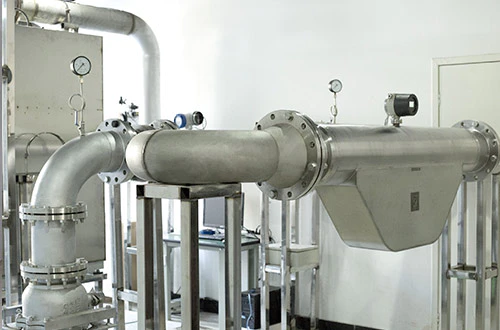Heating, Ventilation, and Air Conditioning (HVAC) systems are the backbone of modern buildings, providing a comfortable environment for occupants. However, these systems can be energy-intensive and require precise control to operate efficiently. One technology that has gained popularity in recent years for optimizing HVAC performance is the Coriolis meter. This article explores the benefits of using Coriolis meters in HVAC applications and how they can contribute to improved system efficiency, reduced energy consumption, and enhanced occupant comfort.
## What are Coriolis Meters?
Coriolis meters are a type of flow measurement device that uses the Coriolis effect to measure the mass flow rate of fluids. The Coriolis effect is a phenomenon where a rotating system deflects a moving object, and in the case of Coriolis meters, this deflection is proportional to the mass flow rate of the fluid. This technology allows for highly accurate measurements of both liquid and gas flows, making it an ideal solution for HVAC applications where precise control is critical.
## Improved Accuracy and Reliability
One of the primary benefits of using Coriolis meters in HVAC applications is their exceptional accuracy and reliability. Unlike traditional flow measurement devices that can be affected by factors such as temperature, pressure, and fluid properties, Coriolis meters provide precise measurements regardless of external conditions. This accuracy enables HVAC systems to operate within tight tolerances, ensuring that the desired temperature and humidity levels are maintained while minimizing energy consumption.
## Enhanced Energy Efficiency
Coriolis meters can significantly contribute to improved energy efficiency in HVAC systems. By providing real-time data on fluid flow rates, these meters enable system operators to optimize energy consumption and reduce waste. For example, in chilled water systems, coriolis meters can measure the flow rate of chilled water to individual air handling units, allowing operators to adjust the flow rate to match the actual cooling demand. This optimization can lead to significant energy savings, especially in large commercial buildings where HVAC systems account for a substantial portion of energy consumption.
## Reduced Maintenance and Downtime
Coriolis meters can also help reduce maintenance and downtime in HVAC systems. By providing continuous monitoring of fluid flow rates, these meters can detect potential issues before they become major problems. For instance, a reduction in flow rate can indicate a blockage or leak in the system, allowing maintenance personnel to address the issue before it causes significant damage or disruption. This proactive approach to maintenance can lead to reduced downtime, lower maintenance costs, and improved overall system reliability.
## Improved Occupant Comfort
The ultimate goal of any HVAC system is to provide a comfortable environment for occupants. Coriolis meters can contribute to improved occupant comfort by ensuring that the system operates within the desired parameters. For example, in air handling units, Coriolis meters can measure the flow rate of heated or cooled air to individual zones, allowing operators to adjust the flow rate to match the actual demand. This precise control can lead to improved temperature and humidity levels, creating a more comfortable environment for occupants.
## Integration with Building Management Systems
Coriolis meters can be seamlessly integrated with building management systems (BMS), enabling real-time monitoring and control of HVAC systems. This integration allows system operators to access flow rate data remotely, making it easier to optimize system performance and respond to potential issues. Additionally, the data provided by Coriolis meters can be used to optimize energy consumption and reduce waste, leading to improved energy efficiency and reduced operating costs.
## Conclusion
In conclusion, Coriolis meters offer numerous benefits in HVAC applications, including improved accuracy and reliability, enhanced energy efficiency, reduced maintenance and downtime, improved occupant comfort, and seamless integration with building management systems. As the demand for energy-efficient and comfortable buildings continues to grow, the use of Coriolis meters is likely to become increasingly popular. By leveraging this technology, building owners and operators can optimize their HVAC systems, reduce energy consumption, and create a more comfortable environment for occupants.





Comments